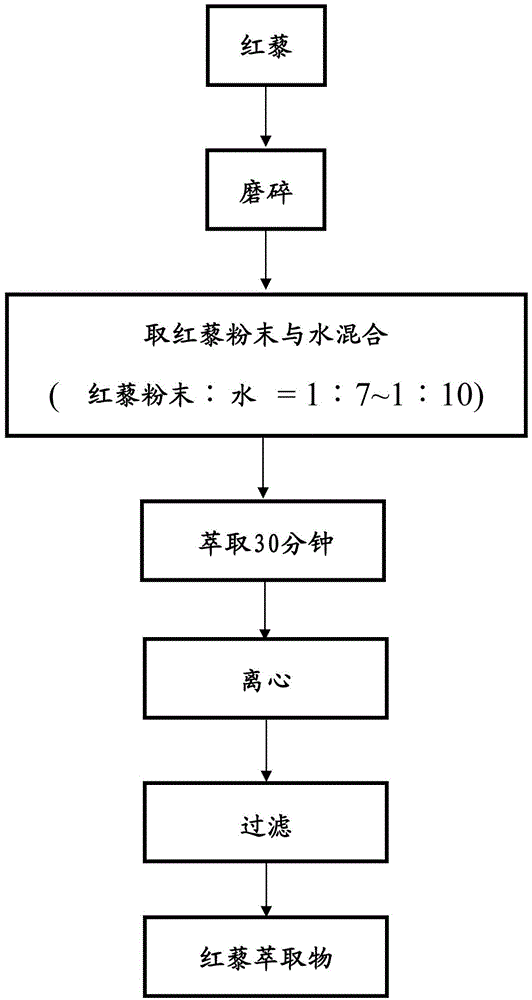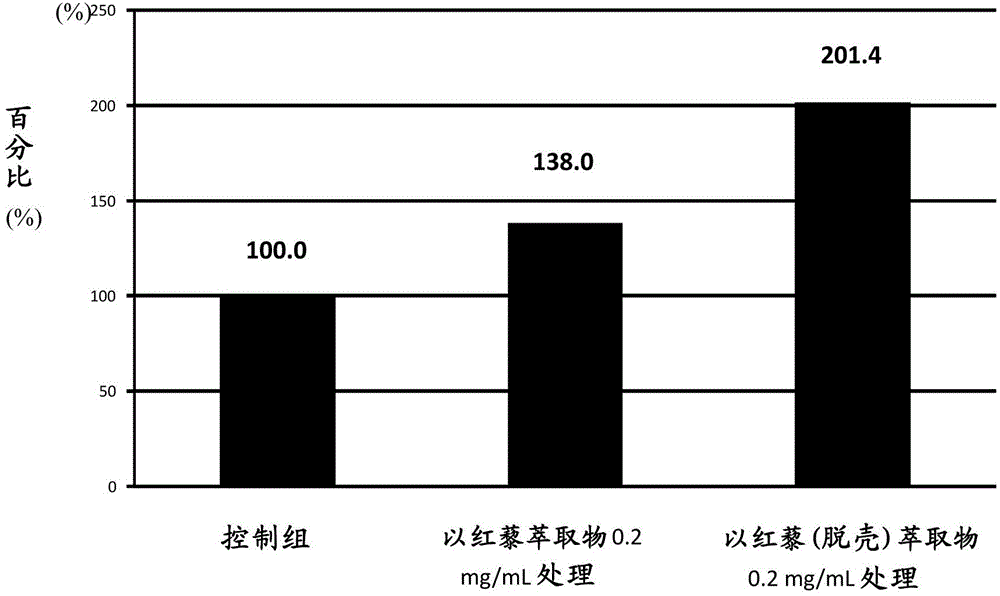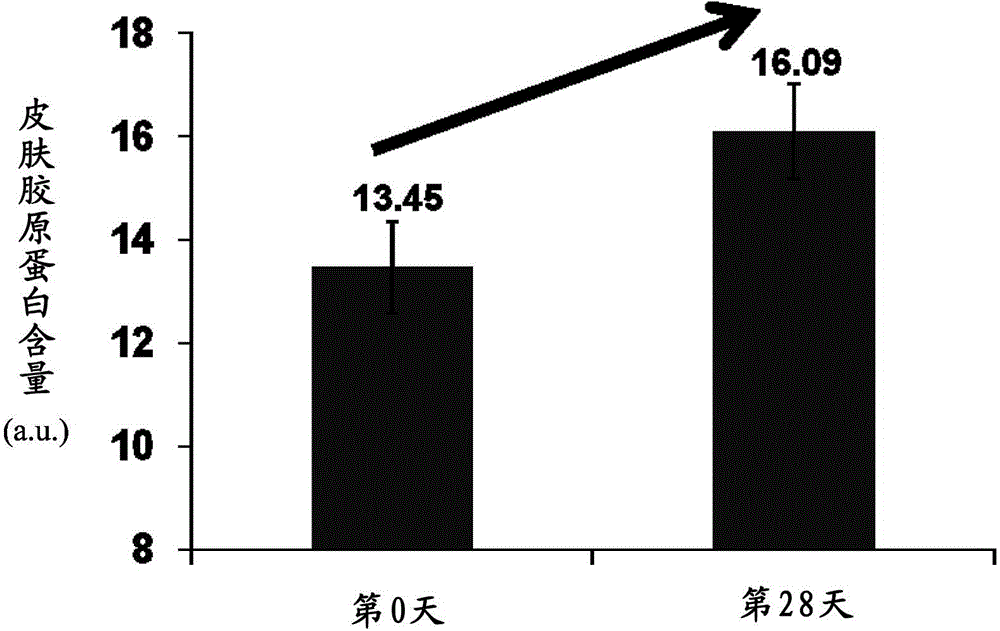Method for enhancing collagen secretion and preventing cutaneous aging using chenopodium formosanum extract
A collagen production, collagen technology, applied in the direction of drug combination, skin care preparations, food preparation, etc., to achieve the effect of resisting UV light damage, preventing glycation, and promoting secretion rate
- Summary
- Abstract
- Description
- Claims
- Application Information
AI Technical Summary
Problems solved by technology
Method used
Image
Examples
preparation example Construction
[0023] Preparation of red quinoa extract
[0024] The red quinoa (Chenopodium formosanum) used in the present invention is derived from Pingtung County, and the whole grain (unhulled) red quinoa is stored at 4° C. for later use. For the preparation of red quinoa extract, please refer to figure 1 . In order to achieve a better extraction effect, before carrying out the extraction step of the present invention, the red quinoa can be made into smaller particles as much as possible by physical methods such as mashing, grinding, chopping, etc., preferably ground way to facilitate the subsequent extraction.
[0025] Once the red quinoa is solvent extracted, the extract can be formulated for a wide variety of applications. However, in order to improve the purity of the active ingredient in the extract, various purification steps may be carried out after the extraction step of the present invention if necessary. The method for purifying the extract does not need to be specially ta...
Embodiment 1
[0032] Example 1: Analysis of the ability of red quinoa to promote collagen secretion rate
[0033] First, human skin fibroblasts CCD-966SK (Human skin fibroblast cells) were cultured in a 24-well plate in minimum essential medium (MEM) containing 10% fetal bovine serum (FBS), and the concentration of human skin fibroblasts was 4 ×10 4 cells / well. The medium was refreshed after 24 hours of incubation. The red quinoa extract was diluted to 0.2 mg / mL with phosphate buffer saline (PBS) and added to each well. Cells without red quinoa extract served as the control group. After the cells were co-cultured with the red quinoa extract for 48 hours at 37°C and 5% carbon dioxide, the supernatant was taken. use Collagen Assay Kit (Bicolor Life Science Assays, Northern Ireland, UK) was used to analyze the total content of water-soluble type I collagen. At room temperature, mix 100 μL of the supernatant obtained by the above method with 1 mL The dye was mixed for 30 minutes. This...
Embodiment 2
[0036] Example 2: Analysis of the ability of red quinoa extract to prevent collagen glycation
[0037] Regarding the analysis of the red quinoa extract of the present invention inhibiting collagen saccharification, at first porcine collagen and fructose were prepared into 60 mg / mL and 1.5 mg / mL respectively with 0.2M phosphate buffer solution (containing 0.06% sodium azide, pH 7.4). M's solution. In order to produce collagen glycosylation, 100 μL of porcine collagen solution, 100 μL of fructose solution, and 100 μL of deionized water were co-cultured in a 1.5 mL microcentrifuge tube, and stored frozen at -20 °C after co-cultivation. Glycation analysis of collagen and fructose was carried out with a glycation inhibitor: aminoguanidine (AG, purchased from Sigma). 100 μL of 3 mM aminoguanidine solution (prepared in deionized water) was added to the solution of the above saccharification reaction instead of deionized water. At the same time, different relative concentrations of ...
PUM
 Login to View More
Login to View More Abstract
Description
Claims
Application Information
 Login to View More
Login to View More - R&D
- Intellectual Property
- Life Sciences
- Materials
- Tech Scout
- Unparalleled Data Quality
- Higher Quality Content
- 60% Fewer Hallucinations
Browse by: Latest US Patents, China's latest patents, Technical Efficacy Thesaurus, Application Domain, Technology Topic, Popular Technical Reports.
© 2025 PatSnap. All rights reserved.Legal|Privacy policy|Modern Slavery Act Transparency Statement|Sitemap|About US| Contact US: help@patsnap.com



